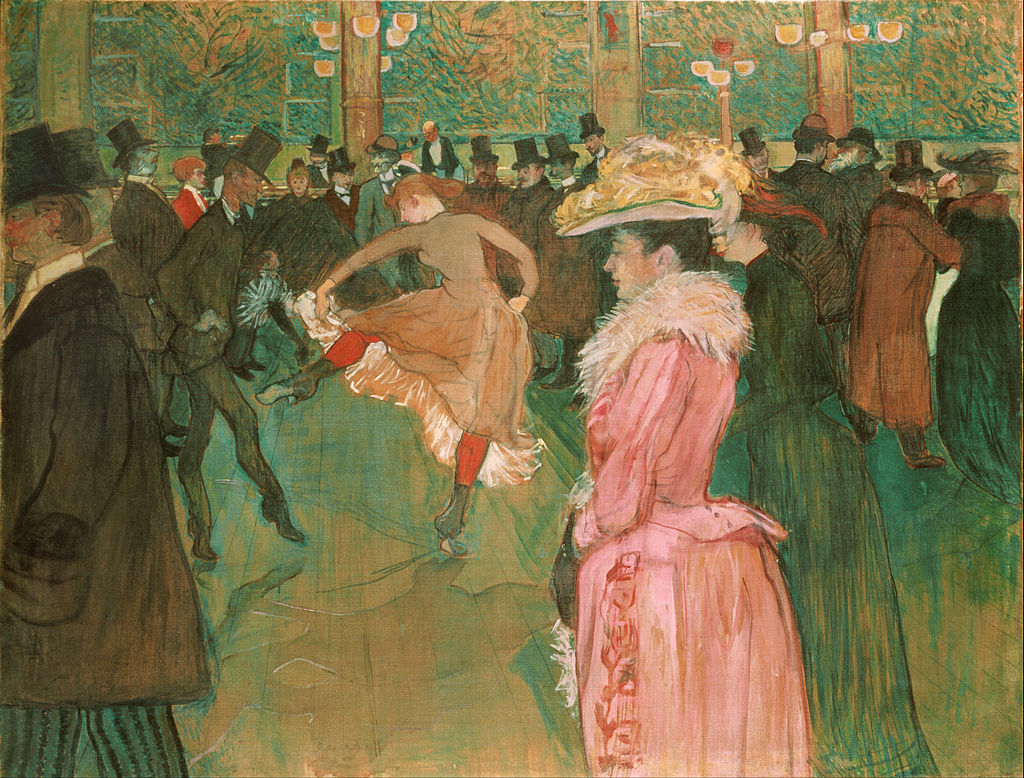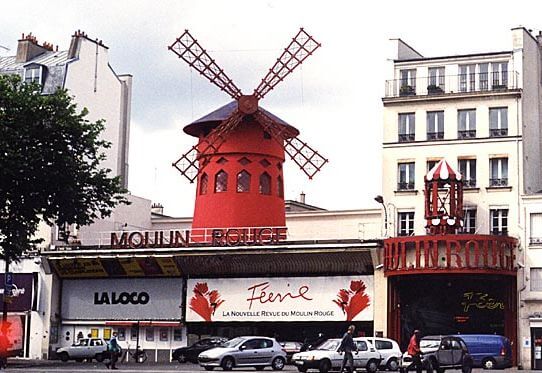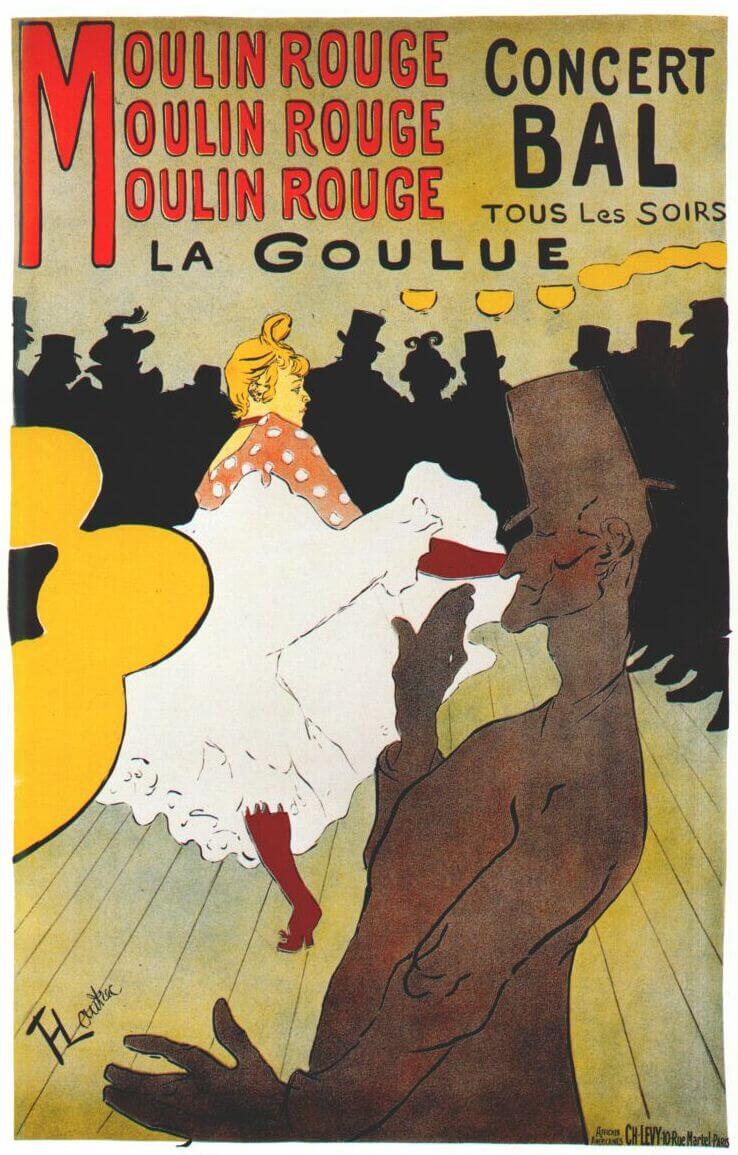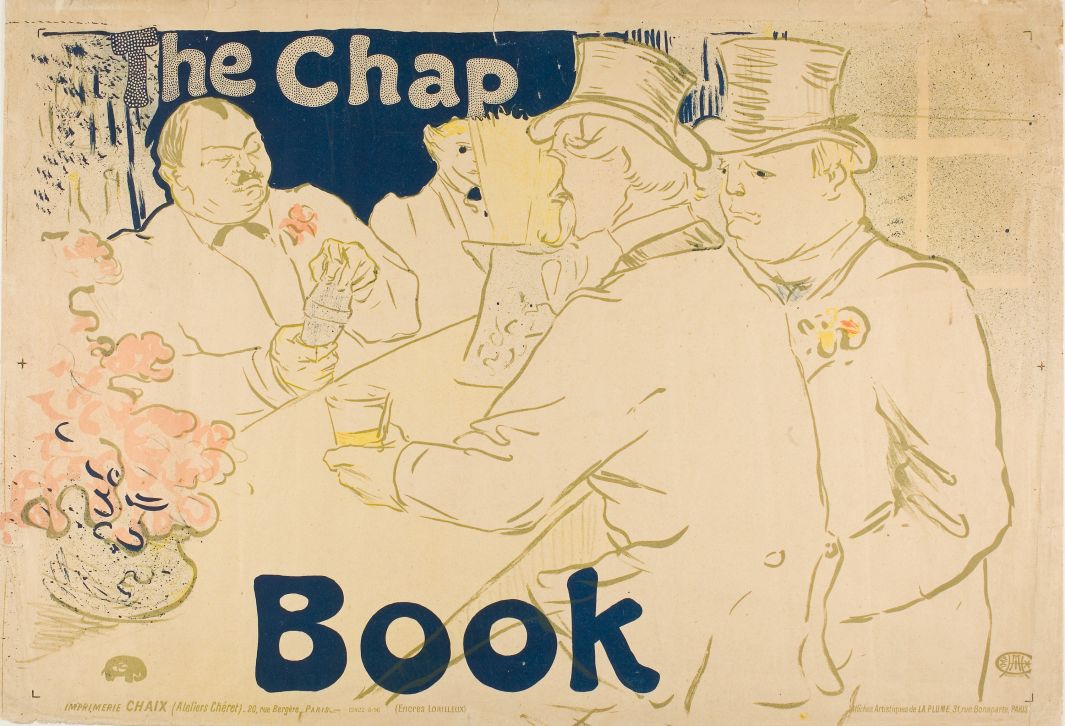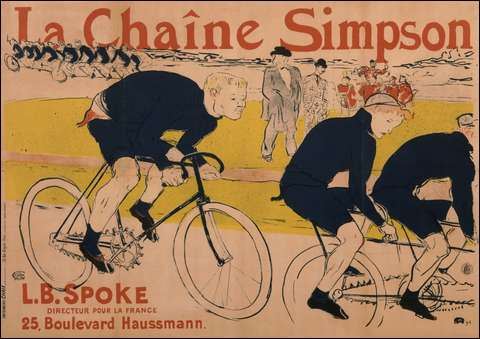|
Where? Gallery 165 of the Philadelphia Museum of Art
When? 1890 What do you see? The couple in the middle is dancing the can-can in the Moulin Rouge. The man is dressed in a black suit with a black top hat. The woman wears a beige-orange dress with red socks. The man teaches the woman some new moves of the can-can dance. In the foreground is an mysterious, unknown woman in an elegant pink dress. A group of dressed-up people, most of which are men, surrounds the dancing couple. These people engage in conversations, look at the dancing couple, or just hang out on the bar in the background. Toulouse-Lautrec knew most of the people in the Moulin Rouge as he was a regular there. Toulouse-Lautrec used a combination of plain colors with some bright colors to take the viewer on a journey through the Moulin Rouge. Most viewers start by looking at the woman in pink in the foreground, look at the dancing couple next, and then look at the man in the bright red jacket in the background. The light in this painting is provided by the electric chandeliers on the ceiling. This painting is lauded for its beautiful composition. Backstory: After Toulouse-Lautrec completed the painting, the owners of the Moulin Rouge bought it and put it on display on top of the bar. An inscription on the back of this painting reads: “The instruction of the new ones by Valentine the Boneless.” This identified the dancing man as Valentin le Désossé (which means ‘the boneless’). He was a star can-can dancer at the Moulin Rouge. Valentin le Désossé was the stage name of Jacques Renaudin. He had a slim build with long arms and legs, giving him the perfect body for a can-can dancer. He was very elastic and could perform the expressive can-can dance moves with unequalled grace. He did not accept money for his dance performances as he did it for the love of dancing. The woman dancing with Valentine is Louis Weber, a popular dancer from that period. She was so flexible that she could keep her body straight while standing on a single leg and with the other leg raised above her head. What is the Moulin Rouge? The Moulin Rouge is a cabaret and nightclub in Paris established in 1889. As its French name suggests, the Moulin Rouge is a building with a large red windmill on top of it. It is the birthplace of the modern can-can dance. The Moulin Rouge provided entertainment for all layers of society. The extravagant shows, innovative and unique interior, and the world-famous dancers performing there were the key ingredients for the immediate and lasting success of this place. Below is an image of an 1891 poster to advertise the Moulin Rouge by Toulouse-Lautrec. The Moulin Rouge is still open to visitors today.
What is the can-can dance? The can-can (or cancan) is a dance developed in France in the first half of the 19th century. It is a high-energy dance originally performed by both sexes. It involved kicking the legs above the head, splits, and cartwheels (check out this video). It developed over time into a dance mainly performed by women. The female dancers used an elaborate and provoking routine with their long skirts.
In the 19th century, the can-can was considered a scandalous dance and it was often performed by prostitutes. However, its status improved over time and by the time the Moulin Rouge opened, there were professional can-can dancers that could make could make a living dancing full-time. Who is Toulouse-Lautrec? Henri Marie Raymond de Toulouse-Lautrec-Monfa (1864-1901) was born in the South of France and was the first child of a wealthy family. From a young age, his artistic skills were present, and he developed himself into a very productive artist. Toulouse-Lautrec is an important representative of the Post-Impressionist art movement, together with artists like Cézanne, Gauguin, Seurat, and Van Gogh. Unlike some of these other painters, Toulouse-Lautrec could sustain himself by making advertising posters for nightclubs and other businesses. Two of those posters are shown below. The first is an 1895 advertisement for the American literary magazine The Chap-Book. The second poster is from 1900 and advertises a Simpson bicycle chain.
Fun fact: The parents of Henri de Toulouse-Lautrec were first cousins and as a result Toulouse-Lautrec suffered from serious health problems throughout his life. One health problem he faced was that his legs stopped growing as a child and, as a result, he became only 4 ft 8 in (1.42) tall.
His atypical stature (the legs of a child combined with the torso of an adult) led to a lot of mockery from other people and Toulouse-Lautrec resorted to drinking a lot of alcohol. To make sure that he always had a supply of alcohol with him, he had a hollow cane – which he needed to walk – filled with alcohol. Interested in a copy for yourself? Poster or canvas
Written by Eelco Kappe
References:
0 Comments
Leave a Reply. |
Categories
All
|
- Home
- Blog
-
Museums
- Alte Pinakothek
- Art Institute of Chicago
- Baltimore Museum of Art
- Barber Institute of Fine Arts
- Bargello
- Barnes Foundation
- British Museum
- Church of Sant’Anastasia
- Cleveland Museum of Art
- Courtauld Institute of Art
- Detroit Institute of Arts
- Frans Hals Museum
- Galleria Borghese
- Gallerie dell'Accademia
- Getty Museum
- Guggenheim
- Hermitage Museum
- Kunsthistorisches Museum
- Kunstmuseum Basel
- Legion of Honor Museum
- Louvre
- Mauritshuis
- Metropolitan Museum of Art
- Musee d’Orsay
- Museum of Fine Arts in Boston
- Museum of Modern Art
- National Gallery in London
- National Gallery of Art
- National Museum in Poznań
- Norton Simon Museum
- Ny Carlsberg Glyptotek
- Palace of Versailles
- Palazzo Pitti
- Palazzo Vecchio
- Petit Palais
- Philadelphia Museum of Art
- Prado
- Pushkin Museum
- Ravenna Art Museum
- Rijksmuseum
- San Diego Museum of Art
- Santa Maria delle Grazie
- St. Peter's Basilica
- Städel Museum
- Statens Museum for Kunst
- Tate Britain
- Tate Modern
- Timken Museum of Art
- Uffizi
- Vatican Museums
- Wallace Collection
-
Artists
- Altdorfer
- Anguissola
- Berlin Painter
- Bosch
- Botticelli
- Boucher
- Bronzino
- Bruegel the Elder
- Brunelleschi
- Cabanel
- Caillebotte
- Canova
- Caravaggio
- Carpeaux
- Cezanne
- Cimabue
- David
- Degas
- Delacroix
- De Maria
- Donatello
- El Greco
- Fontana
- Fra Angelico
- Fragonard
- Gauguin
- Gentileschi
- Gericault
- Gonzalez-Torres
- Goya
- Hals
- Hogarth
- Hokusai
- Ingres
- Leonardo da Vinci
- Lippi, Filippo
- Longhi, Barbara
- Lorrain
- Makovsky
- Manet
- Massys
- Matisse
- Merian
- Michelangelo
- Mochi
- Modigliani
- Monet
- Panini
- Parmigianino
- Perugino
- Picasso
- Pisanello
- Raphael
- Rembrandt
- Renoir
- Reynolds
- Rivera
- Rodin
- Rubens
- Scultori
- Seurat
- Steen
- Tintoretto
- Titian
- Toulouse-Lautrec
- Turner
- Uccello
- Van der Weyden
- Van Dyck
- Van Eyck
- Van Gogh
- Van Hemessen
- Vasari
- Velazquez
- Vermeer
- Veronese
- Vigée Le Brun
-
Locations
- Books
- About Us

